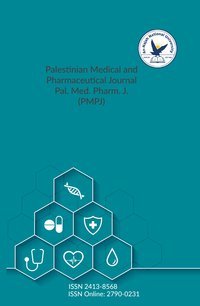Investigation of Antidiabetic Activity and pharmacokinetics in Herbo-mineral Ayurvedic Formulation ‘Arogyavardhini Gutika in streptozotocin induced wistar rat
Article info
2023-01-17
2023-06-18
2024-03-01
107 - 124
Keywords
- Diabetes Mellitus
- Dinitrosalicyclic Acid Method
- Acarbose
- Lipid Profile
- Arogyavardhini Gutika
- AUC
- Starch Iodine Method
Abstract
Aim: Herbs, spices, and minerals are important therapeutic attributes of ayurvedic formu-lations. The formulation Arogyavardhini Gutika is mentioned in the essential drug list of the Ayurvedic Formulary of India. It has a claimed safety profile and is used for the treatment of jaundice, leprosy, fever, oedema, obesity, skin disorders, and other hepatic issues. Methods: An in- vitro study was performed by alpha-amylase inhibition using starch, iodine, and di-nitrosalicyclic acid. An in-vivo study was performed using a streptozotocin-induced diabetic rat model. Graded doses of Arogyavardhini gutika (200 and 500 mg/kg) were administered orally for 14 days to normal and streptozotocin-induced type I diabetic rats (45 mg/kg, intra-venously). Fasting plasma glucose levels were assessed at different time intervals along with lipid profiles (total cholesterol, triglycerides, low density lipoprotein, and high density lipo-protein levels). The pharmacokinetic parameters (Cmax and AUC) of the ayurvedic formula-tion were also estimated. Result: Arogyavardhini gutika exhibited dose-dependent inhibition of alpha-amylase. The IC50 value for Arogyavardhini gutika was 101.72 g/ml compared with standard acarbose of 79.50 g/ml as estimated by the starch-iodine method. In the DNSA method, Arogyavardhini gutika exhibited an IC50 value of 131.51 g/ml compared with standard acarbose of 82.86 g/ml. In the present research, in- vivo studies indicate that the rise in plasma glucose levels in streptozotocin-induced diabetic rats was lowered by arogya-vardhini gutika at both doses (250 mg/kg and 500 mg/kg). However, the effective lowering dose was 500 mg/kg. The Cmax and AUC of the ayurvedic formulation as compared to standard acarbose were low, but the Tmax was found to be similar, i.e., 2 hours. Conclusion: The Ayurvedic formulation Arogyavardhini Gutika showed potential antidiabetic activity in a dose-dependent manner. Thus, it may be used as an alternative therapy for the treatment of diabetes mellitus.
Investigation of Antidiabetic Activity and pharmacokinetics in Herbo-mineral Ayurvedic Formulation ‘Arogyavardhini Gutika in streptozotocin induced wistar rat
معلومات المقال
2023-01-17
2023-06-18
2024-03-01
107 - 124
الكلمات الإفتتاحية
- Diabetes Mellitus
- Dinitrosalicyclic Acid Method
- Acarbose
- Lipid Profile
- Arogyavardhini Gutika
- AUC
- Starch Iodine Method
الملخص
Aim: Herbs, spices, and minerals are important therapeutic attributes of ayurvedic formu-lations. The formulation Arogyavardhini Gutika is mentioned in the essential drug list of the Ayurvedic Formulary of India. It has a claimed safety profile and is used for the treatment of jaundice, leprosy, fever, oedema, obesity, skin disorders, and other hepatic issues. Methods: An in- vitro study was performed by alpha-amylase inhibition using starch, iodine, and di-nitrosalicyclic acid. An in-vivo study was performed using a streptozotocin-induced diabetic rat model. Graded doses of Arogyavardhini gutika (200 and 500 mg/kg) were administered orally for 14 days to normal and streptozotocin-induced type I diabetic rats (45 mg/kg, intra-venously). Fasting plasma glucose levels were assessed at different time intervals along with lipid profiles (total cholesterol, triglycerides, low density lipoprotein, and high density lipo-protein levels). The pharmacokinetic parameters (Cmax and AUC) of the ayurvedic formula-tion were also estimated. Result: Arogyavardhini gutika exhibited dose-dependent inhibition of alpha-amylase. The IC50 value for Arogyavardhini gutika was 101.72 g/ml compared with standard acarbose of 79.50 g/ml as estimated by the starch-iodine method. In the DNSA method, Arogyavardhini gutika exhibited an IC50 value of 131.51 g/ml compared with standard acarbose of 82.86 g/ml. In the present research, in- vivo studies indicate that the rise in plasma glucose levels in streptozotocin-induced diabetic rats was lowered by arogya-vardhini gutika at both doses (250 mg/kg and 500 mg/kg). However, the effective lowering dose was 500 mg/kg. The Cmax and AUC of the ayurvedic formulation as compared to standard acarbose were low, but the Tmax was found to be similar, i.e., 2 hours. Conclusion: The Ayurvedic formulation Arogyavardhini Gutika showed potential antidiabetic activity in a dose-dependent manner. Thus, it may be used as an alternative therapy for the treatment of diabetes mellitus.
An-Najah National University
Nablus, Palestine
Nablus, Palestine
- P.O. Box
- 7, 707
- Fax
- (970)(9)2345982
- Tel.
- (970)(9)2345560
- (970)(9)2345113/5/6/7-Ext. 2628
- [email protected]
- EIC
- Prof. Ismail Warad
